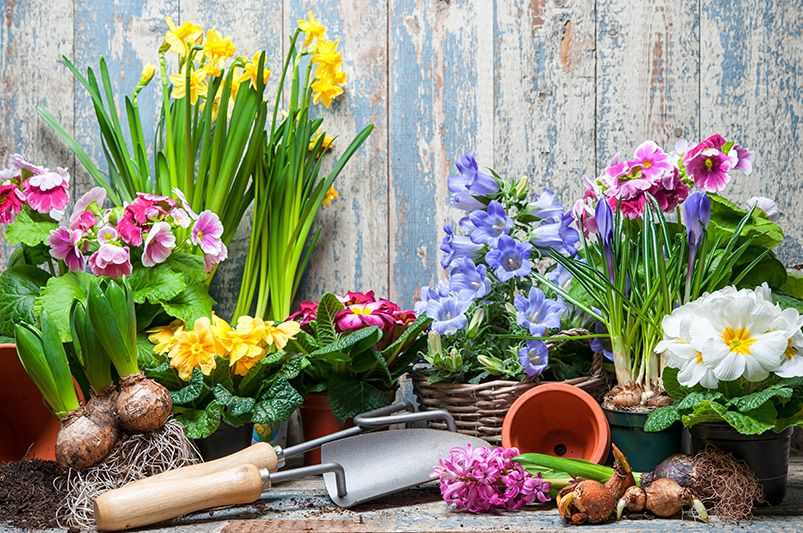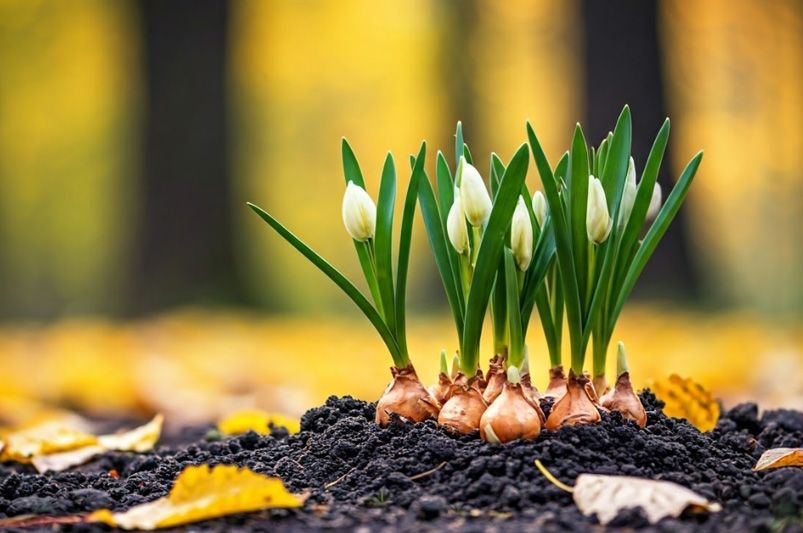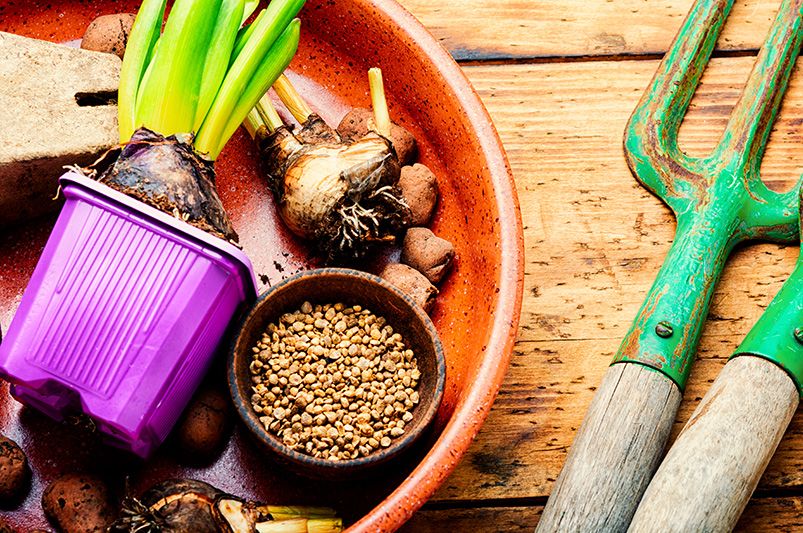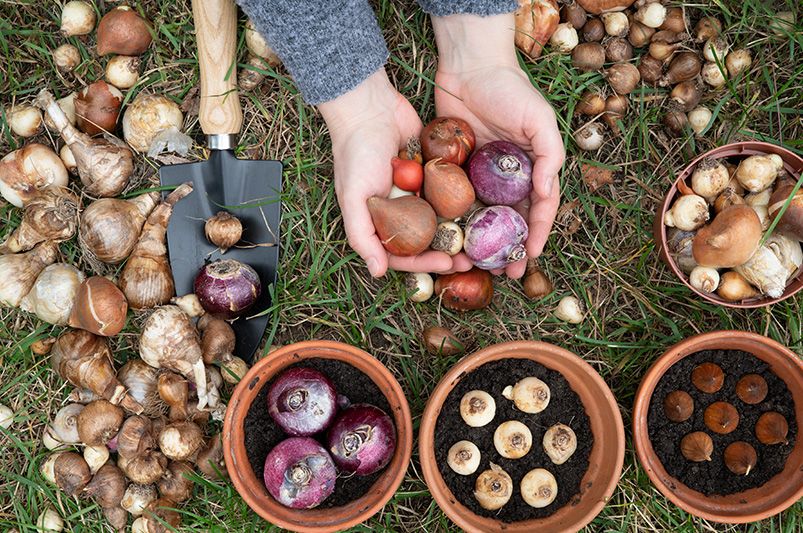
Spring Flowers 101: Fall Planting Guide for Bulb Selection
Published: 03/11/2024 | Updated: 31/10/2024
Key Highlights
- Witness the magic of spring by planting flower bulbs in the fall.
- Ensure vibrant spring blooms by planting before the ground freezes.
- Opt for high-quality, firm bulbs, avoiding any that appear dry or damaged.
- Select bulbs appropriate for your region's climate and sunlight conditions.
- Safeguard your bulbs from hungry critters with protective measures.
Introduction
Picture this: it's early spring, and your garden is full of bright flowers. To make this beautiful view, you need to start in the cool days of fall. Planting fall bulbs is easy and very rewarding. It will lead to a stunning spring garden. This guide will help you choose the right bulbs, know when to plant them, and take care of them during winter. Following these steps will ensure a wonderful spring show.


Understanding Fall Planting
Planting bulbs in the fall may feel strange, but this timing is important for their life cycle. Spring-flowering bulbs are actually resting plants that need cold weather to start growing.
When the soil gets cooler in fall, bulbs start to set down roots. They get ready to grow leaves and flowers in the spring. This cold time, known as "stratification," is necessary to wake them up and make them bloom.
The Importance of Timing for Spring Blooms
Knowing the best time to plant bulbs is important for a beautiful spring garden. You should generally plant your bulbs about six weeks before the ground freezes in your area. This gives the roots time to grow before winter arrives.
Planting too early in warm soil can cause the bulbs to sprout too soon. This puts them at risk from frost. On the other hand, planting too late may not allow enough time for roots to grow well, which can affect their spring growth.
For most northern climates, the best time to plant is from September to October. In southern regions, you can plant in November or even December. However, remember to check your area's climate and look at a local gardening guide for the best advice.

Types of Bulbs to Plant in Fall
The world of fall bulbs has many bright colors and shapes. You can choose the right types to have a beautiful spring garden.
Tulips are known for their classic beauty. They come in a rainbow of colors and bloom in early spring. Daffodils are famous for their bright yellow flowers. They can also survive deer, adding a colorful touch to your garden.
For something special, think about alliums. They have large, round blooms. You might also like the delicate snowdrops. They are usually among the first to bloom, often seen as they come up through the last snow.
Preparing for Planting
A little preparation can help your bulbs grow well and give you a lovely display. It's not only about putting the bulbs in the ground. It's important to make the right environment for them to thrive.
Find a spot that gets plenty of sunlight and has good drainage in the soil. You can add compost or organic matter to help with drainage and to give important nutrients. Now that everything is ready, let’s get the tools we need for planting.
Essential Tools and Resources for Beginners
Before you start planting bulbs in the fall, there are a few important tools that can make the job easier and more fun. You don't need a lot of fancy tools; just a few simple ones will do!
A trowel or a bulb planter is great for making the right holes for your bulbs. Also, using gardening gloves will keep your hands clean and protect them from anything sharp.
To check the proper depth for the bulbs, a measuring tape or ruler is helpful. Finally, having extra soil or compost ready will help you fix the planting area and cover the bulbs after you place them.
Selecting the Right Location for Your Bulbs
Choosing the right spot is very important for your bulb planting success. Most spring-flowering bulbs need full sun, which means they need at least six hours of direct sunlight each day.
Some bulbs, like bluebells and snowdrops, can grow in partial sun or even in shady places. Check the sunlight in your garden and pick a planting bed that matches these needs.
Drainage is also very important. Bulbs that sit in soggy soil can rot easily. So, it's key to plant in areas with good drainage. If your soil holds water, think about using raised beds or adding compost to help improve drainage.
A Step-by-Step Guide to Planting Bulbs in Fall

Now that you have your bulbs, tools, and a spot picked out, it's time to plant! Here are some simple steps to follow so you can have a fun and successful planting experience.
Keep in mind that planting bulbs is exciting. Imagine the bright flowers that will brighten your garden in the spring. They will bring color and fragrance to your outdoor area. Let’s begin!
Step 1: Testing Soil and Making Adjustments
Before you start digging, check your soil first. Knowing its makeup and pH level can help your garden. It can be the difference between dull blooms and a beautiful spring garden.
To begin, do a simple soil test. You can buy a home testing kit or ask for help at your local nursery. The results will tell you about your soil's pH level and any missing nutrients.
Most bulbs like slightly acidic to neutral soil, which is a pH of 6.0 to 7.0. If your test shows the soil is too acidic, you can add lime. If it's too alkaline, try adding elemental sulfur. Also, mix in organic matter like compost or well-rotted manure. This will help with drainage, air flow, and nutrients.
Step 2: Planning Your Garden's Design
With your soil ready, it's time to get creative with your garden design! Think about the mature size and colors of the bulbs you’ve picked. Place taller bulbs, like alliums and fritillaries, at the back of the planting bed. Shorter ones, like crocuses and grape hyacinths, should go along the borders or pathways.
Remember, bulbs multiply over time. So, it’s important to give them enough space. A good rule is to leave about 2-3 inches between the smaller bulbs and 4-6 inches between the larger ones. Feel free to mix different colors and textures. This will create beautiful combinations that look great together.
For a more natural look, try planting bulbs in groups or clusters instead of straight lines. This will imitate how they grow in nature, bringing charm and a fun vibe to your garden.

Step 3: Proper Depth and Spacing for Bulbs
Planting depth and spacing significantly influence the bulb's growth and overall performance. Plant too shallow, and they risk drying out; plant too deep, and they might struggle to emerge.
A general rule is to plant bulbs at a depth two to three times their height. For example, a 2-inch bulb would be planted 4-6 inches deep. However, always refer to the instructions on the bulb packaging for specific recommendations, as different species have varying requirements.
Use a trowel or bulb planter to dig holes at the appropriate depth and space them according to your desired design. Remember that proper spacing ensures adequate air circulation, minimizing the risk of diseases and competition for nutrients.
|
Bulb Size |
Planting Depth |
Spacing |
|
Small (1-2 inches) |
3-4 inches |
2-3 inches |
|
Medium (2-3 inches) |
4-6 inches |
3-4 inches |
|
Large (3+ inches) |
6-8 inches |
4-6 inches |
Step 4: Caring for Planted Bulbs Through Winter
Congratulations! Your bulbs are tucked away safely for the winter. But, you still need to take care of them. The winter months need some smart steps to protect your new plants.
When the ground freezes, put down a layer of mulch. Use materials like shredded bark or straw, and make it about 2-4 inches thick. Mulching is like a cozy blanket. It keeps the soil warm, stops temperature changes, and stops weeds from growing.
Don’t be in a hurry to take away the mulch in late winter. Wait until the frost threat is gone and you see new shoots popping up. This helps the bulbs adjust slowly to the colder temperatures. It also keeps the new foliage from getting damaged.

Aftercare and Maintenance
When the busy fall planting time is over, you might overlook your sleeping bulbs. However, giving them some care during winter can help a lot when spring arrives.
Though bulbs don't need much work, they do need some attention, especially in their first year. You should keep the right moisture levels and also protect them from pests.
Watering Requirements for New Bulbs
Newly planted bulbs need enough moisture to grow strong roots before the ground freezes. After you plant them, water them well so that water goes deep into the soil and reaches the base of the bulb. Be careful not to water too much, as too much water can cause the bulb to rot.
In winter, rain usually provides enough water for the dormant bulbs. If it is very dry during winter, add some water now and then. Make sure the soil is moist but not soaked.
When spring comes and new shoots start to grow, go back to regular watering, especially during dry times. Remember, watering consistently during the growing season helps the foliage grow well and produces beautiful blooms.
Mulching Techniques to Protect Bulbs in Winter
Mulching is very important for keeping your bulbs safe during the winter. You can think of it as covering your bulbs with a warm blanket. After the first frost, put a 2 to 4-inch layer of mulch around the base of your planted bulbs.
Mulching has a few key benefits. First, it insulates the bulbs, helping to keep the soil temperature stable. This protects the bulbs from frost heave. Frost heave is when freezing and thawing push the bulbs from the ground, which can cause damage.
Second, mulch keeps the soil moist. It helps prevent the soil from drying out quickly, especially when there is not much rain. Lastly, a good layer of mulch can stop weeds from growing, so your bulbs can get the nutrients they need without competition. For the best results, pick organic mulches like shredded bark, straw, or compost.
Conclusion
In conclusion, planting bulbs in the fall for spring flowers is a fun and rewarding task. It needs good timing, choosing the right bulbs, and knowing how to plant them. By following the steps in this guide, you can make sure your garden is full of color in the spring. Remember to test your soil and plan how you want your garden to look. Plant the bulbs at the right depth and take care of them during winter. Watering and mulching are very important for your bulbs. Enjoy the beauty of nature by planting bulbs this fall. You will love the beautiful flowers in the spring.
Frequently Asked Questions
When is the Best Time to Plant Spring-Flowering Bulbs?
The best time for planting in the fall is six weeks before the ground freezes. If you live in northern climates, try to plant in September or October. This gives the bulbs enough time to grow roots before winter comes.
How Deep Should Bulbs Be Planted?
The right depth for planting bulbs is usually two to three times how tall the bulb is. You should always look at the planting guidelines on the bulb package. This is important because different types of bulbs have different needs.
Can I Plant Bulbs in Containers?
Container gardening with bulbs is a great choice, especially if you have little space. Make sure your containers have holes for drainage. Use a good potting mix that drains well. Also, place them where they can get plenty of sunlight.
What Should I Do if My Bulbs Start to Sprout Early?
If your bulbs start to grow early because of changing temperatures in late winter, don’t worry. Just cover the new shoots with a thin layer of mulch. This will help protect them from frost.
How Do I Protect Bulbs from Rodents and Other Pests?
- Deter rodents by planting bulbs in wire cages.
- Surround the bulbs with gravel or sharp-edged mulch.
- You can also use natural repellents like predator urine.
- Planting deterring plants, such as daffodils, nearby can help too.


